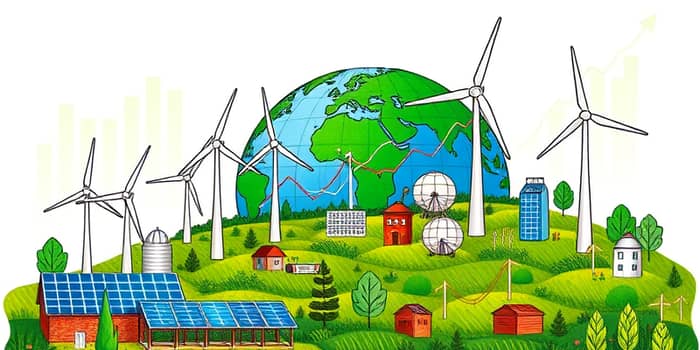
Green finance has emerged as a cornerstone in the global effort to combat climate change and foster sustainable development. By directing capital toward projects that reduce greenhouse gas emissions and protect natural resources, investors can play a pivotal role in shaping a more resilient world.
As environmental risks become more pronounced, financial markets are awakening to the importance of support environmentally sustainable projects, ensuring that economic growth and ecological stewardship go hand in hand.
Green finance refers to financial products and services dedicated to funding projects with positive environmental outcomes. These initiatives range from renewable energy plants to conservation efforts and sustainable agriculture.
At its core, green finance aims to internalize environmental costs and redirect investment flows toward a low-carbon economy. It aligns closely with the United Nations Sustainable Development Goals, particularly SDG 13 (Climate Action) and SDG 7 (Affordable and Clean Energy).
The green finance market has witnessed explosive growth in recent years. In 2024, its valuation reached USD 5,068,250 million, driven by heightened climate awareness and supportive policies worldwide. Projections indicate a rise to USD 23,990,438.28 million by 2032, reflecting a remarkable compound annual growth rate.
This data underscores a robust investor appetite for green instruments, highlighting the financial sector’s readiness to champion climate-resilient opportunities.
Green finance utilizes a variety of specialized tools to channel resources toward sustainable initiatives:
Several factors are propelling green finance to the forefront of global markets:
Despite this momentum, obstacles remain that require collective action and innovation:
Technological advancement and policy evolution are revolutionizing green finance. Artificial intelligence and machine learning now enable investors to assess environmental risk with greater precision, optimizing portfolios for both impact and return.
Moreover, regulatory frameworks are evolving to embed sustainability criteria into financial disclosures, enhancing accountability and performance measurement. Green fintech platforms are democratizing access to sustainable investments, allowing retail and institutional investors alike to participate in funding climate solutions.
In parallel, the development of emerging clean energy technologies—such as next-generation batteries and carbon capture systems—promises to open new frontiers for green finance. As these innovations mature, they will attract further capital, creating a virtuous cycle of investment and impact.
Investors eager to contribute to a sustainable future can take several practical steps:
First, integrate ESG criteria into existing portfolio management frameworks. By evaluating companies on environmental performance alongside financial metrics, investors can identify high-impact opportunities without sacrificing returns.
Second, allocate a portion of capital specifically to green bonds and sustainability-linked loans. These instruments offer defined environmental outcomes and are often backed by stringent reporting requirements.
Third, engage with fund managers and corporate issuers to demand transparency. Active dialogue helps ensure that green labels reflect genuine environmental benefits, reducing the risk of greenwashing.
Finally, consider partnerships with specialized green banks or impact investment funds. These organizations possess deep expertise in climate-related financing and can guide investors through complex project assessments.
Green finance stands at the intersection of profit and purpose, offering a pathway to address the pressing environmental challenges of our time. By channeling investment toward sustainable projects, the financial sector can catalyze the transition to a resilient, low-carbon economy.
As we look to the future, collaboration among governments, corporations, financial institutions, and individual investors will be essential. Together, we can harness the power of capital markets to deliver transformative change—ensuring that economic prosperity and environmental stewardship progress in harmony.
References













